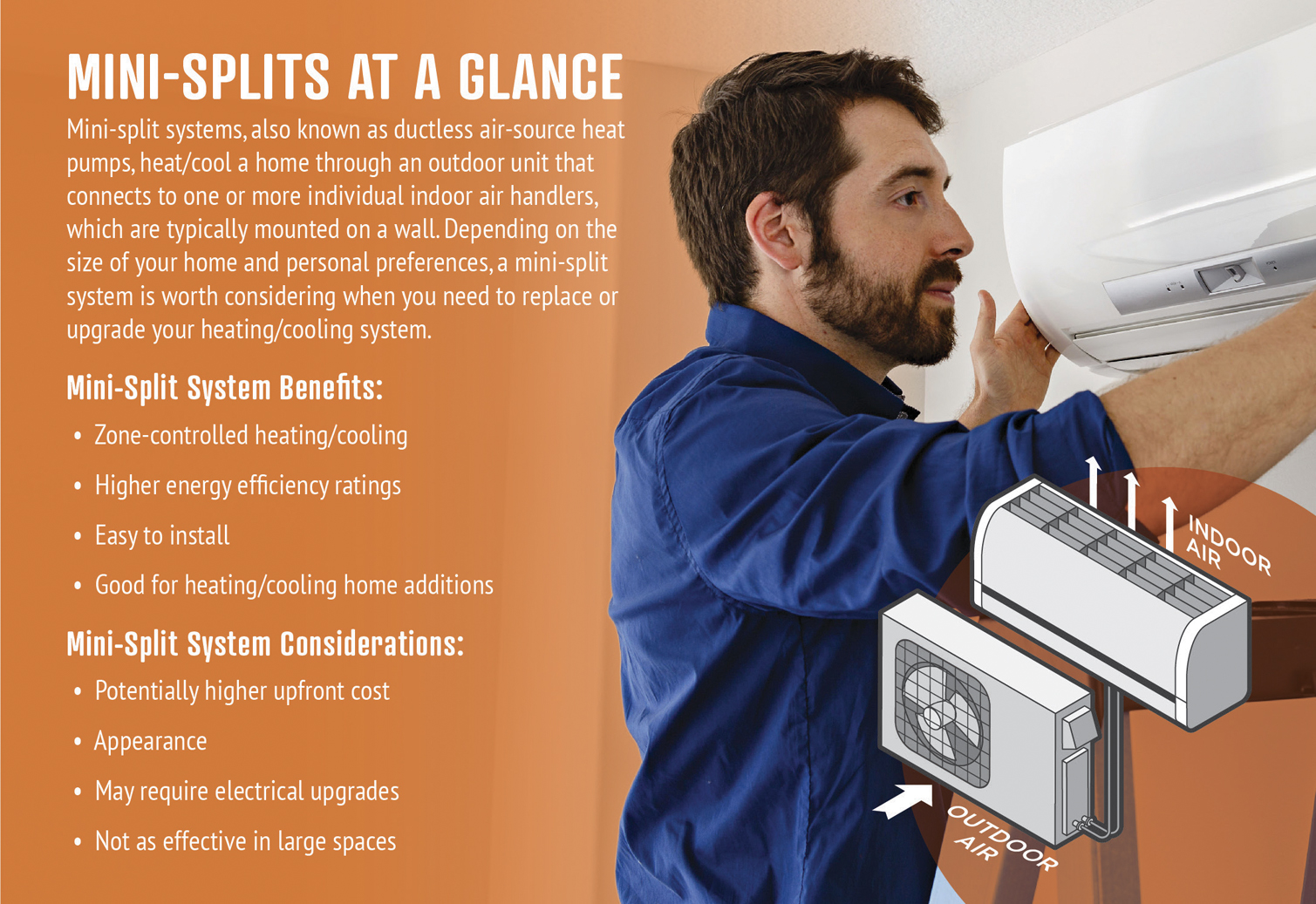How would you like a personalized comfort zone within your home? One where the temperature is customized to your liking and may be different than the temperature in the shared living areas or other rooms in the house. This flexibility and customization are why mini-split systems, also known as ductless air-source heat pumps, and their energy efficiency aspects are so popular.
Let’s unpack some mini-split basics and explore whether this type of system is a good choice for your home heating and cooling needs.
A mini-split system is a type of HVAC equipment used for heating and cooling, allowing you to control the temperature in individual rooms or spaces. Similar to central heating and cooling, mini-split systems have two main components — an outdoor compressor and indoor air-handling units. A narrow conduit links the indoor units to the outdoor compressor.
While central heating and cooling systems feature an indoor unit connected by long lengths of ductwork, minisplits are typically ductless. This means energy is not lost traveling through long stretches of ductwork. Installing the air-handling unit in a desired room or area enables you to control the temperature more precisely, reducing energy consumption. That’s because you’re adjusting the temperature to a single room or space rather than the whole home.
IS A MINI-SPLIT SYSTEM RIGHT FOR YOU?
Mini-split systems are a popular option in home additions, or to supplement heating and cooling in a space that may be furthest away from the main living area, such as a finished attic or basement. In these instances, it may not be feasible to install or extend the ductwork required in traditional central cooling and heating systems. In contrast, mini-splits are relatively easy to install requiring a small hole for the conduit connecting the indoor and outdoor units. Most systems can handle up to four indoor rooms or zones connected to one outdoor unit. Each of the zones can be customized because each includes a thermostat that enables you to heat or cool the space as needed, saving energy and money over time.
COOL SOLUTIONS
Mini-split systems bring additional benefits. They are quiet, improve indoor air quality and are typically easy to install. Many come with remotes to make temperature control even easier, and because of their smaller size, mini-split systems have many placement options for indoor and outdoor units.
One of the greatest benefits of mini-splits is that they typically have a higher SEER (seasonal energy efficiency ratio) rating than traditional central heating and cooling systems. The higher the unit’s SEER rating, the more energy efficient it is.
ADDITIONAL CONSIDERATIONS
However, according to the Department of Energy, “minisplits cost about $1,500 to $2,000 per ton of cooling capacity. That’s about 30% more than central systems (not including ductwork) and may cost twice as much as window units of similar capacity.”
While the technology is improving and evolving, those in particularly colder climates may need a fuel backup to run a mini-split system. Aesthetics are another factor to consider, as some homeowners don’t like the appearance of the indoor units, which are more visible than central air conditioning vents.
If you’re considering an upgrade or additional heating and cooling equipment, talk to a qualified technician to learn if a ductless mini-split system could work for your home.




